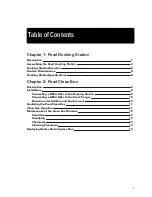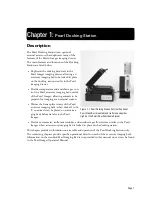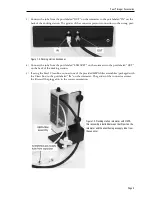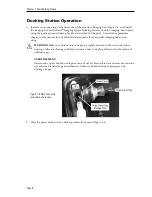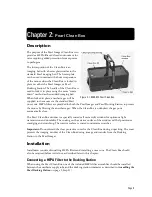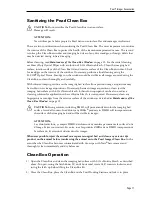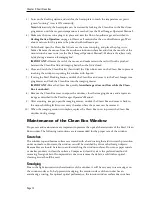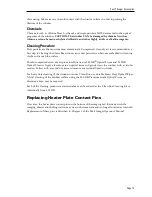
Pearl® Imager Accessories
Figure 1-9. Location and function of
front panel indicator lights.
Indicator
Description
(Blue)
ON continuously when the docking station is powered on. OFF when
an error condition exists or the power supply is disconnected.
(Green)
Blinks rapidly when heater plate is not within 1.5 °C of the 38 °C set
point.
ON continuously when heater plate is within 1.5 °C of the 38 °C set
point.
OFF when an imaging bed is not installed on the docking station or
there is an error condition.
(Red)
ON continuously when the heater plate temperature is greater than 5
°C above set point (38 °C). The heater plate is automatically turned
OFF, but the indicator remains on. Disconnect the power supply to
turn off the red warning light and reset the temperature controller.
Connect the power supply again after the heater plate has cooled.
Blinks slowly when the current to the heater plate is not correct. This
may indicate that the heater plate contact pins are dirty, shorted
(bent), or need replacement. See Chapter 5 of the Pearl Imager
Operator's Manual for the contact pin replacement procedure.
Contact LI-COR if the error condition persists after contact pin
replacement.
3) Wait for the heater plate to reach the set point (38 °C). The green “running” icon blinks rapidly
until the set point is reached and then stops blinking and remains on (Figure 1-9).
4) Use the adjustment knob on the rotameter to set the flow rate to 0.5 liters per minute (typical)
and start gas flow from isoflurane vaporizer or equivalent. Allow 1 minute to prime the system
with isoflurane gas. Observe the safety warnings given in Chapter 1 concerning use of isoflurane
gas and oxygen. Follow the instructions from the manufacturer of the anesthesia system to anes-
thetize mice.
CAUTION:
To prevent pressure build up in the external anesthesia system, don’t close the
rotameter on the Pearl Docking Station unless the anesthesia system is properly vented.
AVERTISSEMENT:
Pour empêcher l'accumulation de pression dans le système externe d'anesthésie, ne fermez
pas le rotamètre sur la station d'amarrage de Pearl à moins que le système d'anesthésie soit
correctement aéré.
5) Move the mouse from the induction chamber to the imaging bed, remove the nose cone plug,
and slide the muzzle of the mouse into the nose cone. Complete instructions can be found in
Chapter 4 of the Pearl Imager Operator's Manual. Consult the appropriate chapter in this
manual for any additional instructions for the specific imaging bed you are using.
6) Lift the locking handle on the accessory imaging bed and remove it from the docking station.
Move the imaging bed immediately to the Pearl Imager for imaging.
Important:
The flow of anesthesia gas stops after the imaging bed is unlocked from the docking
station and does not start again until the imaging bed is locked into the Pearl Imager imaging
drawer or returned to the docking station and locked in place.
Page 7
Summary of Contents for 5700-DS
Page 1: ...Pearl Trilogy Accessories Manual...
Page 2: ......






